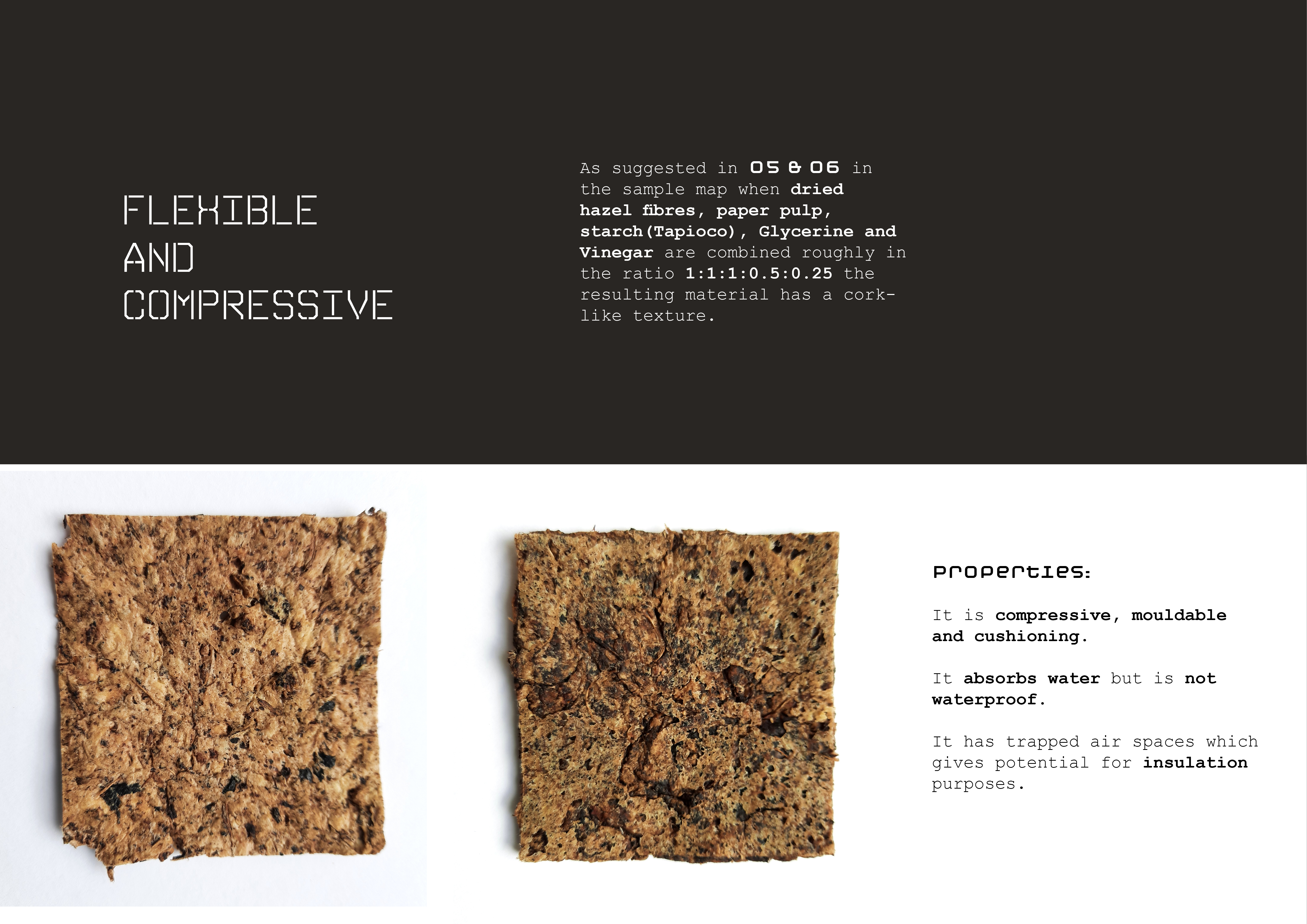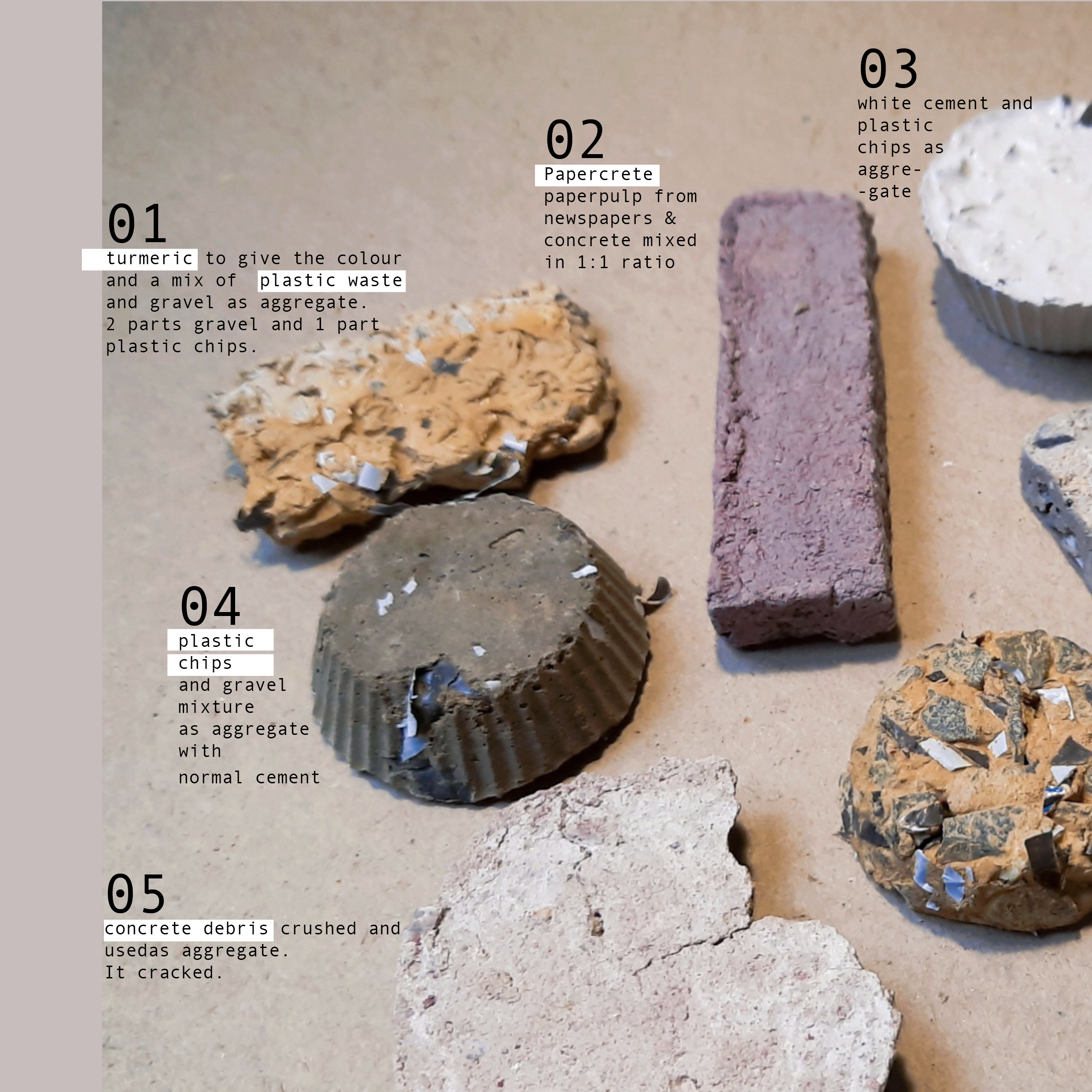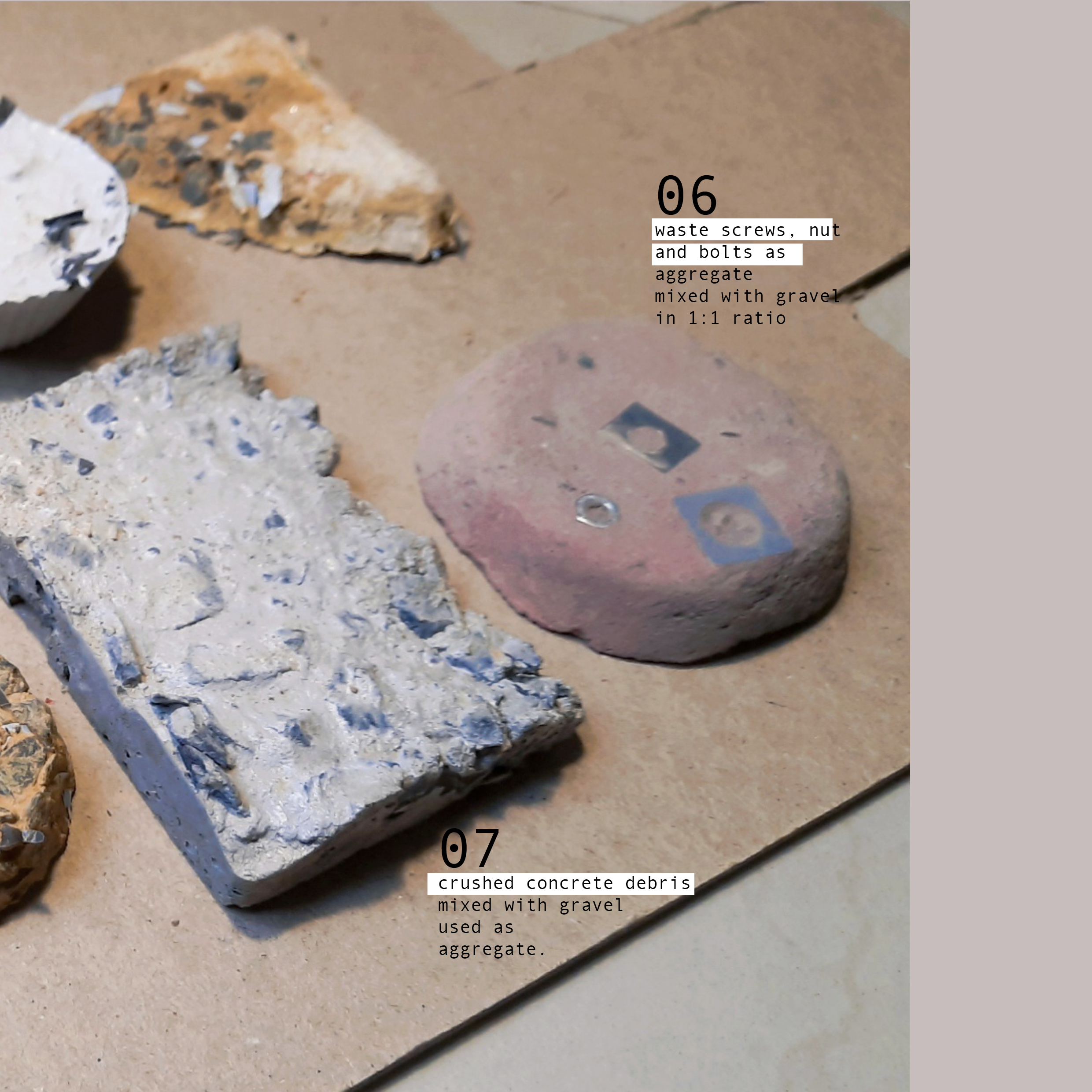
Experimental materials
Material design
Sustainable Materials
Material design
Sustainable Materials
These are few experiments with materials; mainly waste and discarded to speculate and make materials of the future.
︎︎︎Heyzel ︎︎︎Bioplastics
︎︎︎Sustainable Concrete
︎︎︎Heyzel ︎︎︎Bioplastics
︎︎︎Sustainable Concrete
Heyzel
“Heyzel” is a new material derived from the byproduct from the hazelnut tree. The material uses the waste fibrous coating around the hazelnut pods which is waste and turns it into a variety of materials having a range from rigid, high compressive strength to flexible and compressive.
Heyzel is a composite material combining dried hazel fibres, paper pulp, starch(Tapioco), Agar-Agar, Glycerine and Vinegar.By combing these in different ratios varying flexibilities and compressive strengths can be achieved. Heyzel has trapped air spaces giving it insulating and absorbant properties.
Millions of hazelnuts are produced every year and almost all of the fibrous pods end up either in landfills or are burnt. But with Heysel things change! Now hazelnut waste can be turned into blocks and sheets of required properties bringing circularity in the hazelnut production[1].
Come say hi to this new material Hey! Zel
Heyzel is a composite material combining dried hazel fibres, paper pulp, starch(Tapioco), Agar-Agar, Glycerine and Vinegar.By combing these in different ratios varying flexibilities and compressive strengths can be achieved. Heyzel has trapped air spaces giving it insulating and absorbant properties.
Millions of hazelnuts are produced every year and almost all of the fibrous pods end up either in landfills or are burnt. But with Heysel things change! Now hazelnut waste can be turned into blocks and sheets of required properties bringing circularity in the hazelnut production[1].
Come say hi to this new material Hey! Zel
[1] Circular with Katie Treggiden - Seetal Solanki



Bioplastics
With hundreds of miles of land and ocean surfaces crammed up with plastic filth, to the micro levels where it has seeped and polluted our entire bio systems; plastic has become a hazardous part of our living that has to be contained.
Through this project I have explored how plant based biomass can be fabricated into materials similar to conventional plastics. These are biodegradable, easy to make (requiring equipments you can find easily at your homes) and thus becomes an effective solution to the rising plastic pollution.
![]()
Through this project I have explored how plant based biomass can be fabricated into materials similar to conventional plastics. These are biodegradable, easy to make (requiring equipments you can find easily at your homes) and thus becomes an effective solution to the rising plastic pollution.

Sustainable Concrete compositions
Sustainable concrete with aggregates composition using waste materials with cement. An experimentative approach using plastic waste, concrete debris and other waste/discarded materials in different quantities and proportions to make new materials.


